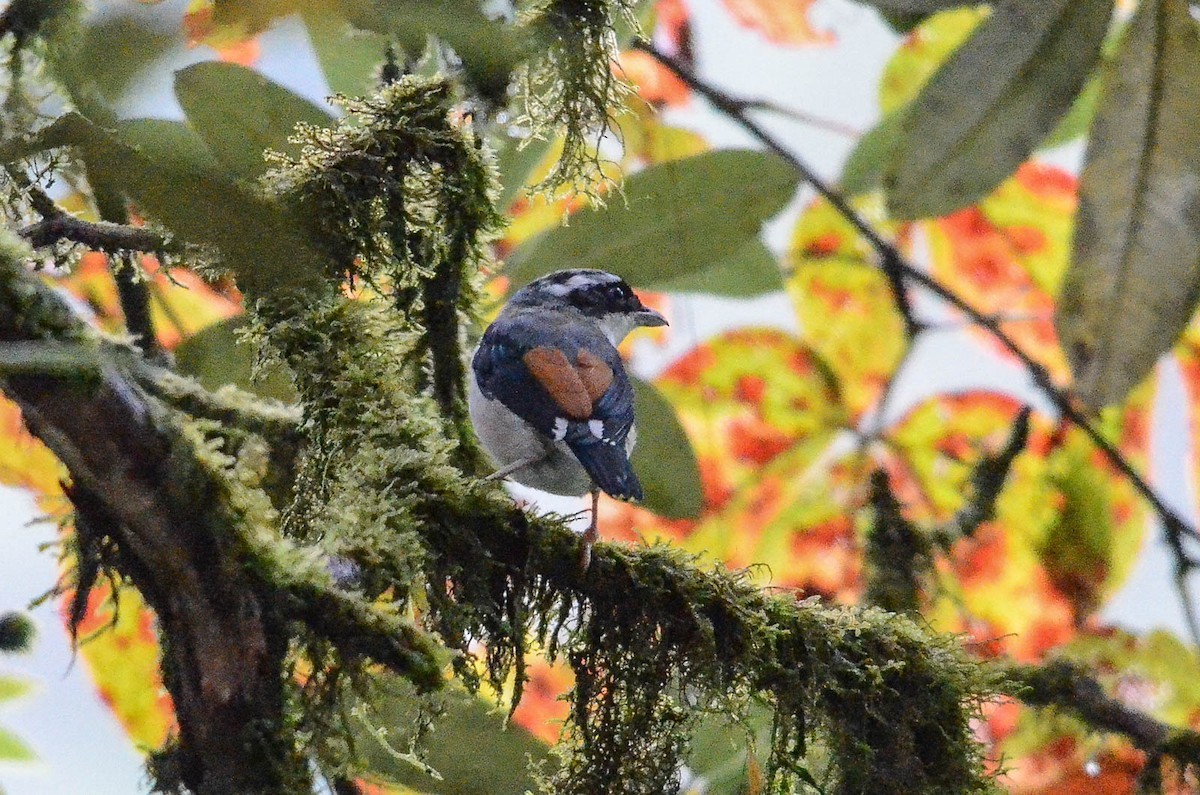Himalayan Shrike-babbler
A species of Shrike-babblers Scientific name : Pteruthius ripleyi Genus : Shrike-babblers
Himalayan Shrike-babbler, A species of Shrike-babblers
Botanical name: Pteruthius ripleyi
Genus: Shrike-babblers
Content
Description General Info
 Photo By Nikolaj Mølgaard Thomsen
Photo By Nikolaj Mølgaard Thomsen Description
Adult males have a black head and a greyish back. A white superciliary stripe begins just above and behind the eye, extending back down the sides of the nape. The throat and underside are whitish. The inner edges and tips of the primaries are white, the tertiaries (the three inner secondaries) are uniformly orange-chestnut, unlike dark chestnut in P. a. validirostris. The flanks have a hint of pale pink and grey. The grey on the back is lighter than the shade in validirostris. The bill is black and hooked at the tip. The adult female is olive brown above with the wing coverts edged grey. The secondaries are edged with olive green and the outer three primaries are tipped in white on the inner edge. The tertiaries are uniformly chestnut. Both males and females are paler than P. a. validirostris. The tail is black. The outer tail feathers are olive green and tipped in yellow with the inner webs black. The central tail feathers are olive green with a black tip. The underside is whitish buff as in the male but washed with grey from the middle of the abdomen to the vent. 
Nest Placement
Tree
Dite type
Insectivorous
General Info
Feeding Habits
Bird food type
Behavior
Himalayan shrike-babblers are strictly arboreal and are seen foraging for insects mainly in the upper canopy. During the breeding season they are found in pairs but at other times several birds may be found, often in mixed-species foraging flocks. They also feed on berries, hopping along branches and sometimes hanging like a nuthatch. They sometimes sit still and will call often. The call being a series of loud kewkew kwekew repeated three or four times and the song from February to June transcribed as cha-chew, cha-ca-chip. The nest is a hammock, like that of an oriole, built in a fork towards the tip of a branch high in the canopy of a tree. The clutch varies from two to four eggs which are pinkish white and speckled in purple brown, the spots merging to form a ring towards the broad end. 
Distribution Area
The species is found in the western Himalayas from northern Pakistan and extending east through India into central Nepal and possibly further east. The eastern limits of the species are unclear but some evidence based on song differences suggests that they might occur as far east as Arunachal Pradesh. This might be negated if it is found that song variations exist within the eastern form Pteruthius aeralatus validirostris of Blyth's shrike-babbler. 

 Photo By Nikolaj Mølgaard Thomsen
Photo By Nikolaj Mølgaard Thomsen Scientific Classification
Phylum
Chordates Class
Birds Order
Perching birds Family
Vireos Genus
Shrike-babblers Species
Himalayan Shrike-babbler